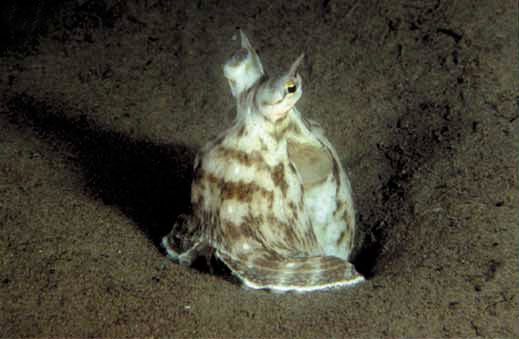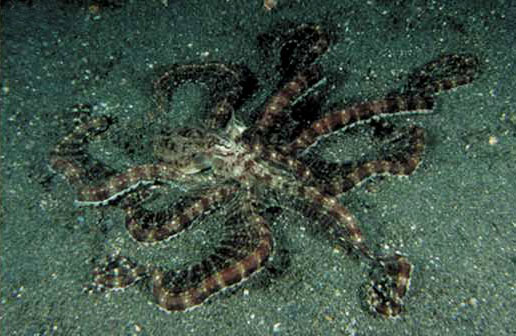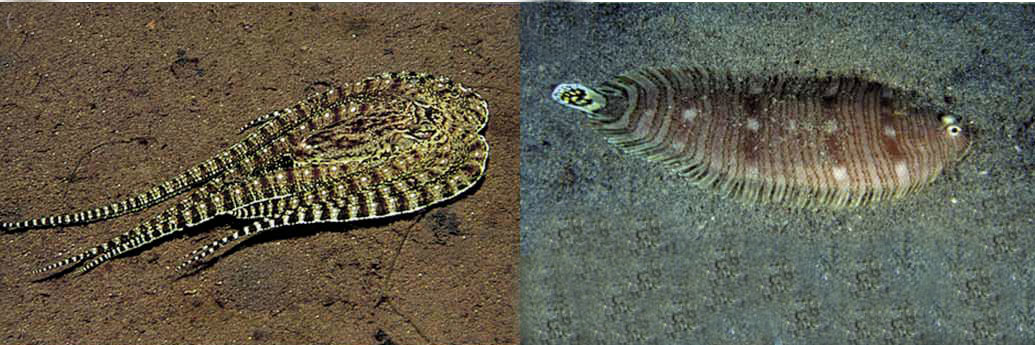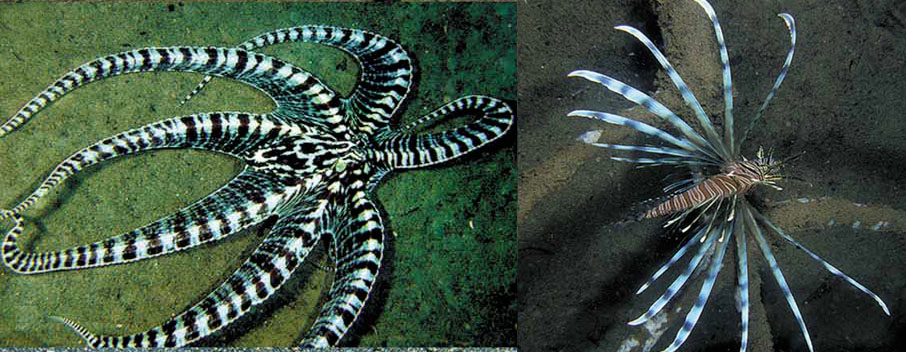Scoundrels – #5
Most animals are content with mimicking one species or a group of species, indeed that’s all they can do because their ruses are based on the way they look. However, there is one animal that’s a master of many disguises – the mimic octopus (Thaumoctopus mimicus), which is such a wily beast it’s at number five in the scoundrel run-down.
This eight-limbed trickster is a denizen of the estuarine and shallow coastal waters of the Indo-Malaysian archipelago, a habitat that’s not the safest for a large, succulent invertebrate. To protect itself in these hostile waters this octopod has evolved some very sophisticated mimicry that hinges on its sinuous limbs and colour-changing abilities.


Should the octopus spy danger then it draws its arms into a leaf-like shape, changes colour to match the sea-bed and swims off with undulations of its body. The posture, colour and particularly the movement are startlingly similar to a number of flatfish found in the same area. These flatfish have venom glands at the base of their dorsal and anal fins and many predators steer well clear of them.

In situations when the predator isn’t fooled by the old flatfish trick, the octopus swims up from the sea bed and splays its arms wide. Cruising slowly through the water in this posture it looks for all intents and purposes like a lion fish brandishing its venomous spines. The approaching predator has dealt with lionfish before, knowing their stings to be particularly painful so it swims off and searches for easier pickings.

The mimic octopus continues on its foraging rounds and then accidentally swims through the breeding ground of a damselfish, which happen to be fiercely territorial. The fish doesn’t take kindly to this intruder and it goes on the offensive. With an angry damselfish bearing down on it, the octopus uses yet another of its impersonations and bolts for the nearest hole. It changes colour and pattern and sticks six of its arms into the hole, leaving two at the surface heading off in different directions, waving sinuously in the water. Hey presto – a convincing impersonation of a banded sea-snake, a reptile that will quite happily scoff a damselfish. The aggressive fish gets the message and backs off.

As splendid as these impersonations are they are not the entire repertoire of this mollusc. Some predators may be invulnerable to the poisonous spines of flatfish and lionfish and unfazed by the venomous bite of a sea-snake. In these circumstances the octopus may swim to the surface, fully extend its many arms and float slowly back towards the sea-bed in much the same way as certain jellyfish found in the same waters. Even if the stinging cells of a large jellyfish are not enough to deter a hungry predator, the octopus has one more trick up its mantle: it takes to the sea-floor and on a mound of silt it raises its arms above its body to give a very convincing impression of a large, stinging anemone.
Reference
Norman, M. D., Finn, J., and Tregenza, T. Dynamic mimicry in an Indo-Malayan octopus. Proceedings of the Royal Society (Series B) 268, (2001) 1755-1758.
Leave a Reply